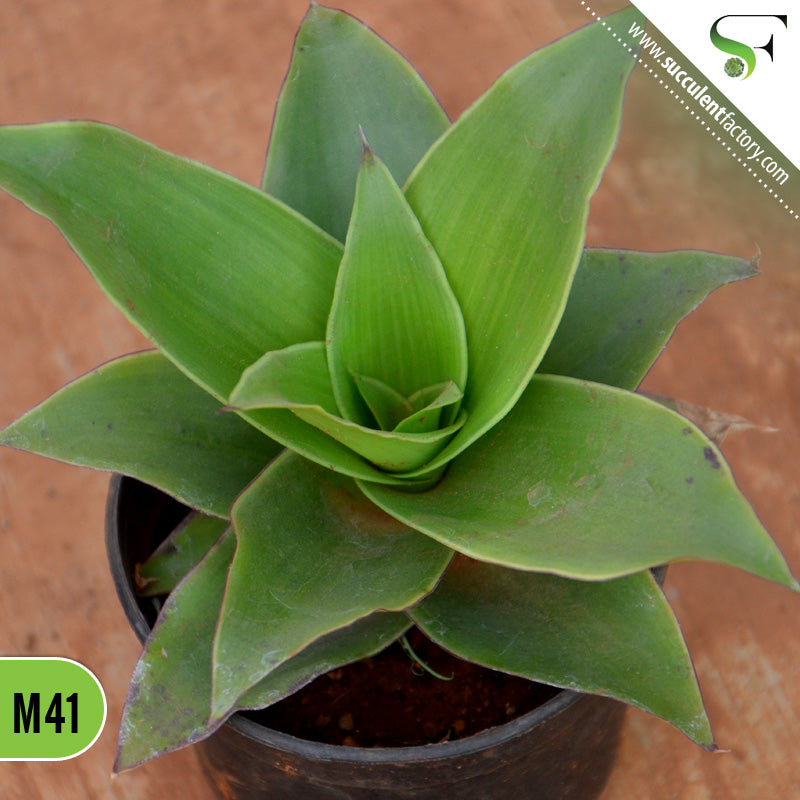Callisia Fragrans
Callisia Fragrans
Couldn't load pickup availability
Callisia fragrans, commonly known as Turtle Vine or Inch Plant, is a fast-growing, trailing succulent native to tropical regions of Central and South America. It is known for its fleshy, rounded leaves that grow in pairs, with purple or dark green coloration and a distinctive pattern on the undersides. The plant has a vining, spreading growth habit and produces small, white or pink flowers when it is well-cared-for. Callisia fragrans is often grown as a ground cover, hanging plant, or even in containers, where it cascades down beautifully. It is a low-maintenance plant that thrives in a variety of indoor and outdoor conditions, making it a favorite among succulent and houseplant enthusiasts.
Propagation:
Callisia fragrans can be easily propagated through stem cuttings or leaf cuttings.
-
Stem Cuttings:
- The most common method of propagation for Callisia fragrans is through stem cuttings.
- Select a healthy stem with a few leaves attached. Use a clean, sharp knife or scissors to cut the stem just below a node (where leaves are attached).
- Place the cutting in water or directly into a well-draining succulent mix.
- If placed in water, roots will begin to develop within 2–3 weeks. If placed directly in soil, mist the cutting lightly and wait for it to root (usually within 2–4 weeks).
-
Leaf Cuttings:
- While not as common, you can propagate Callisia fragrans by taking individual leaves. Let the leaves callous for a day or two before placing them on a well-draining mix.
- They will root slowly, but it’s best to use stem cuttings for faster results.
Sunlight Requirement:
- Bright, Indirect Light: Callisia fragrans prefers bright, indirect sunlight. It can tolerate some direct sun, but too much can cause the leaves to scorch, especially in hotter climates.
- Indoors, place the plant near a window that gets plenty of natural light, but avoid exposing it to harsh, direct sunlight for long periods.
- While it can survive in lower light conditions, the plant will grow more slowly, and its leaves may become leggy or lose their vibrant colors.
Soil Preparation:
- Well-Draining Soil: Like most succulents, Callisia fragrans requires well-draining soil to prevent root rot. A cactus or succulent mix works well, or you can make your own by combining regular potting soil with sand or perlite.
- If growing outdoors, ensure that the soil is light and sandy. This plant does well in slightly acidic to neutral pH soil, so a balanced mix is ideal.
Watering:
- Moderate Watering: Callisia fragrans has moderate water needs, and like most succulents, it prefers to dry out completely between waterings. During the growing season (spring and summer), water thoroughly when the soil is dry to the touch, but do not let the plant sit in water.
- In the winter, reduce watering significantly as the plant enters dormancy. Overwatering can lead to root rot, so always ensure the soil is well-draining.
- If growing indoors, make sure the plant is not sitting in a saucer of water, as stagnant water can cause the roots to rot.
Propagation Recap:
- Method: Stem cuttings or leaf cuttings
- Success Rate: High with stem cuttings
- Time to Root: 2–4 weeks for stem cuttings
Hashtags:
#CallisiaFragrans #TurtleVine #InchPlant #SucculentCare #SucculentPropagation #IndoorSucculents #LowMaintenancePlants #TrailingPlants #EasyCareHouseplants #SucculentLovers #HangingSucculents #WaterwisePlants #BrightLightPlants #SucculentFactory #GroundCoverSucculents #CascadingPlants
Callisia fragrans is a fantastic plant for both beginner and seasoned gardeners, offering both beauty and ease of care. Its unique trailing growth habit and attractive foliage make it a lovely addition to any home or garden!
Propogation
Propogation
Plant Care Guide
Plant Care Guide
Merchandising tips
Merchandising tips
Share


